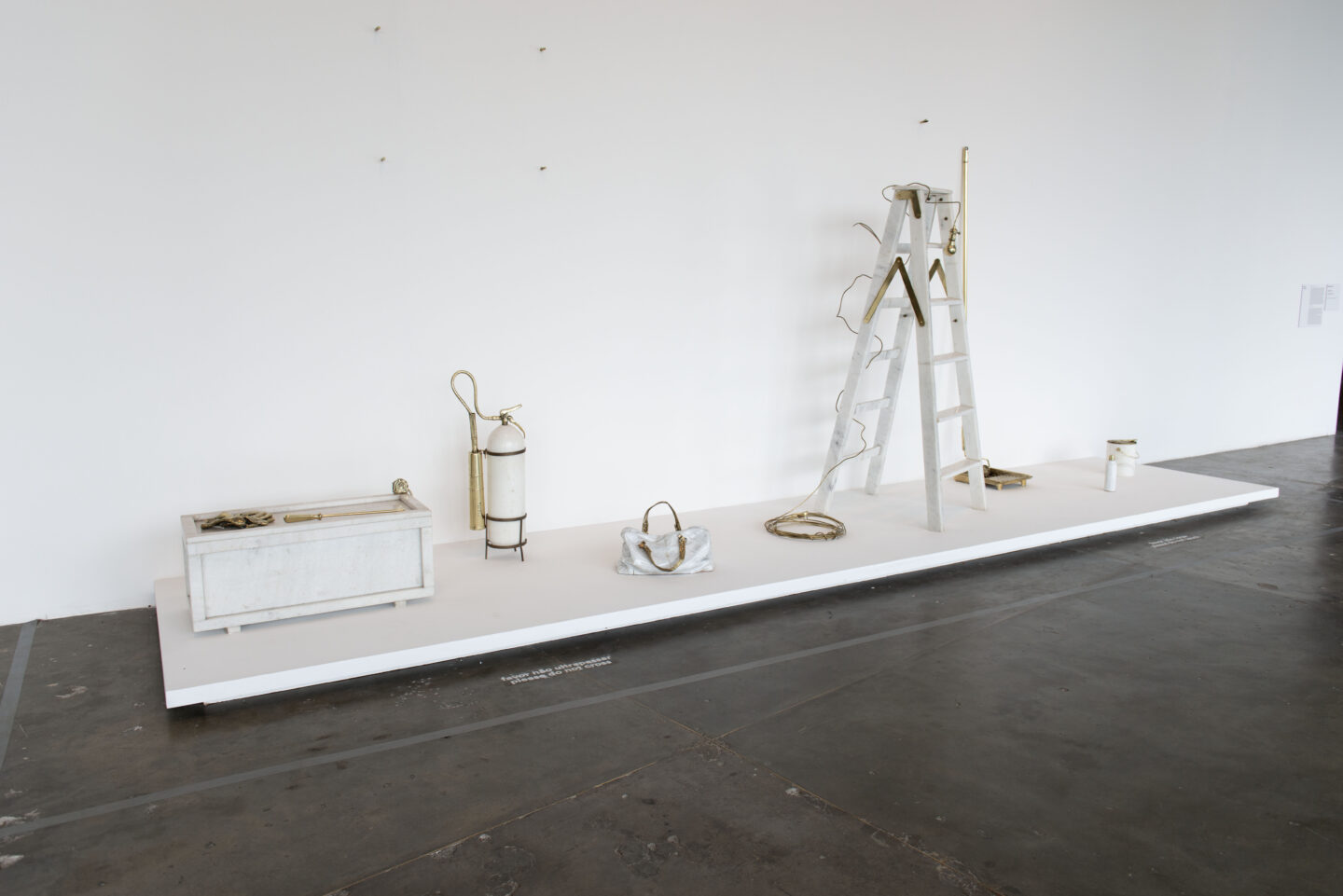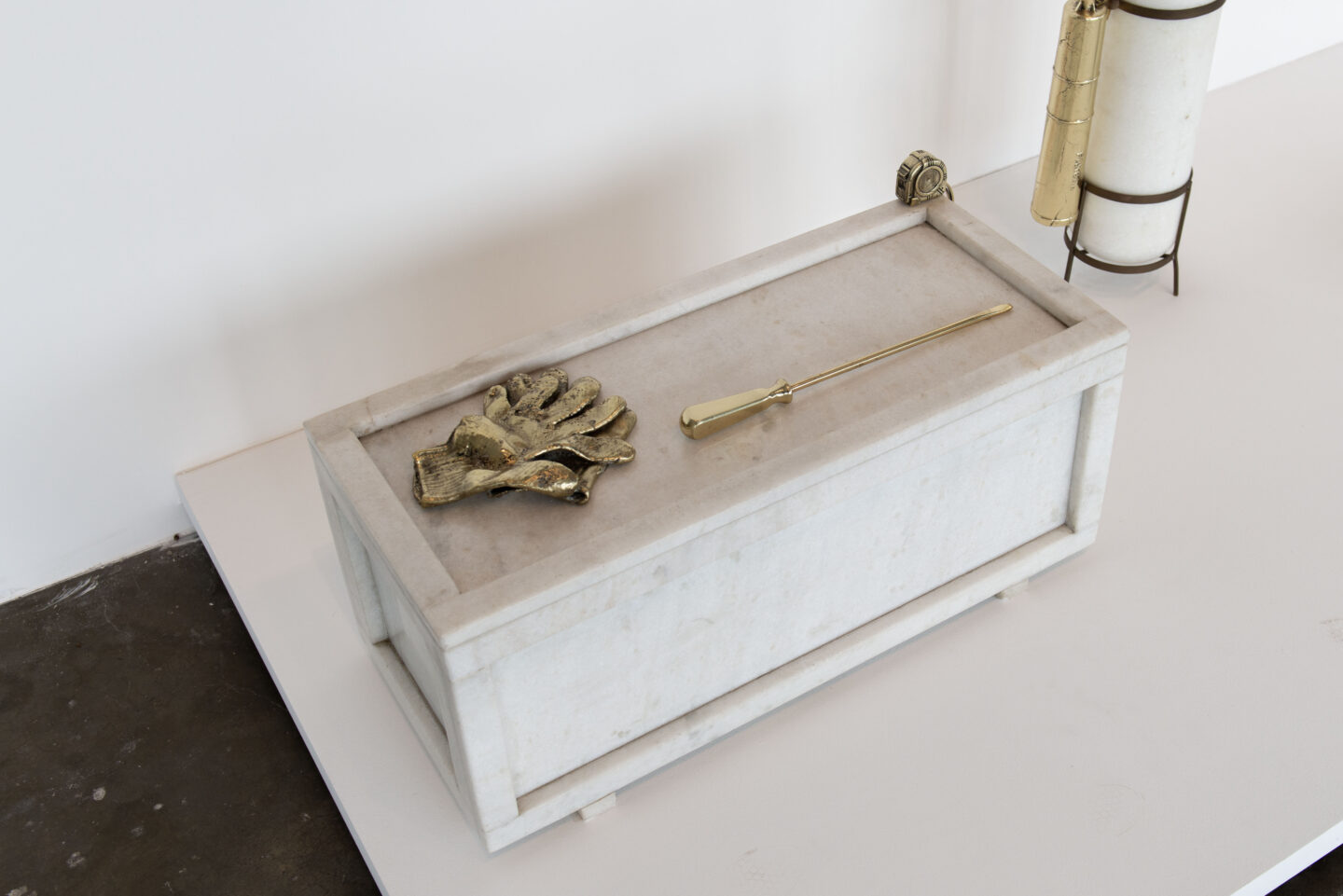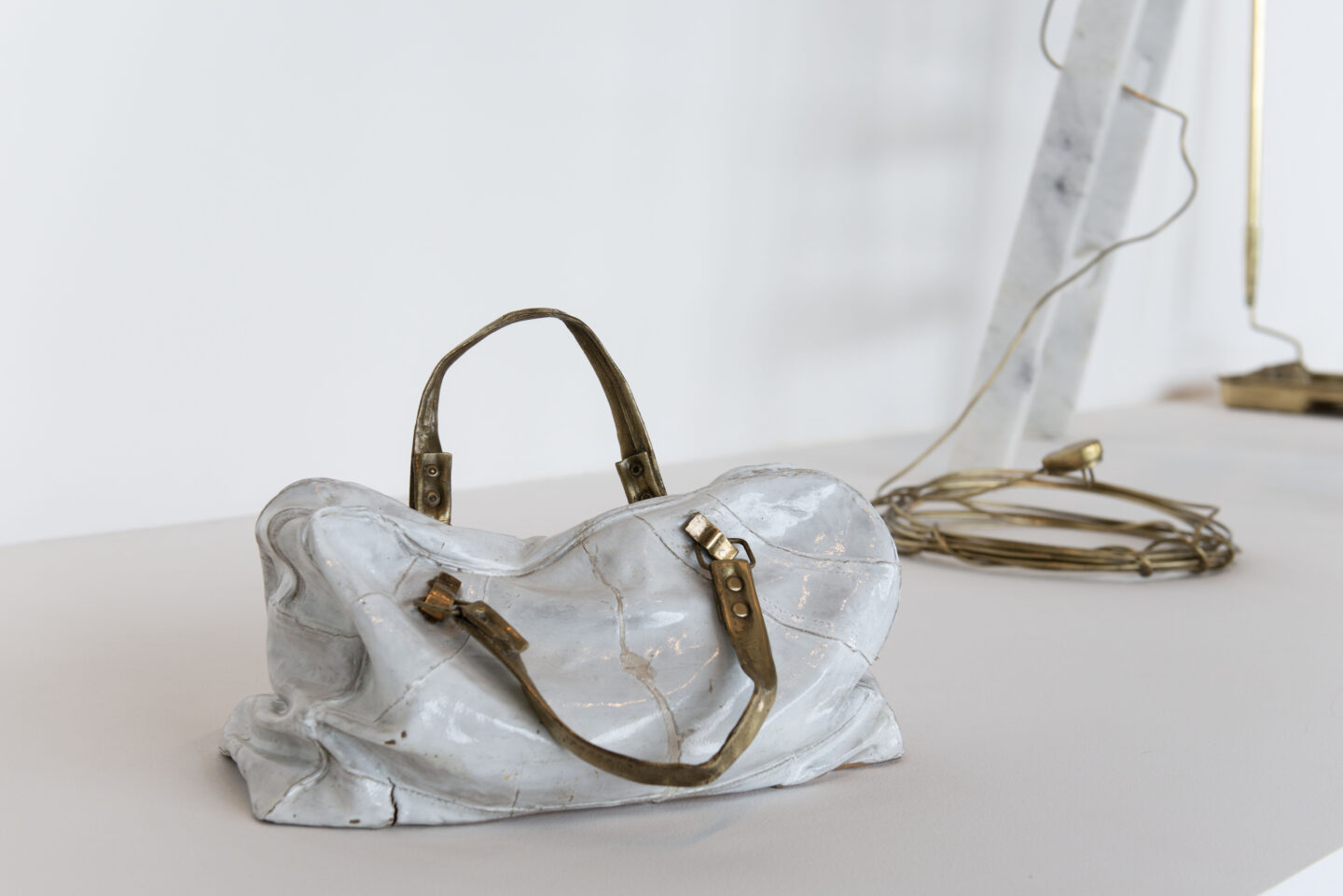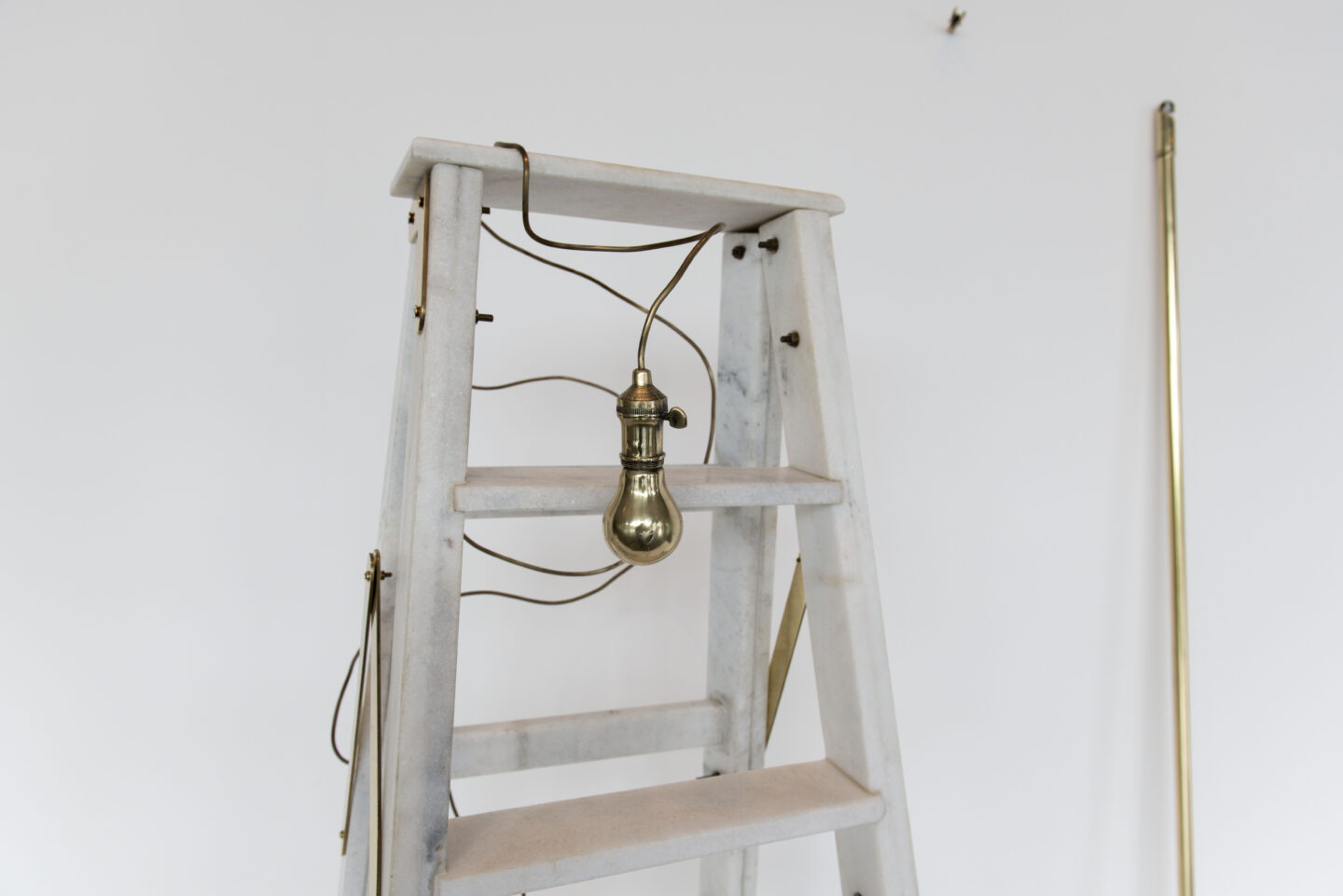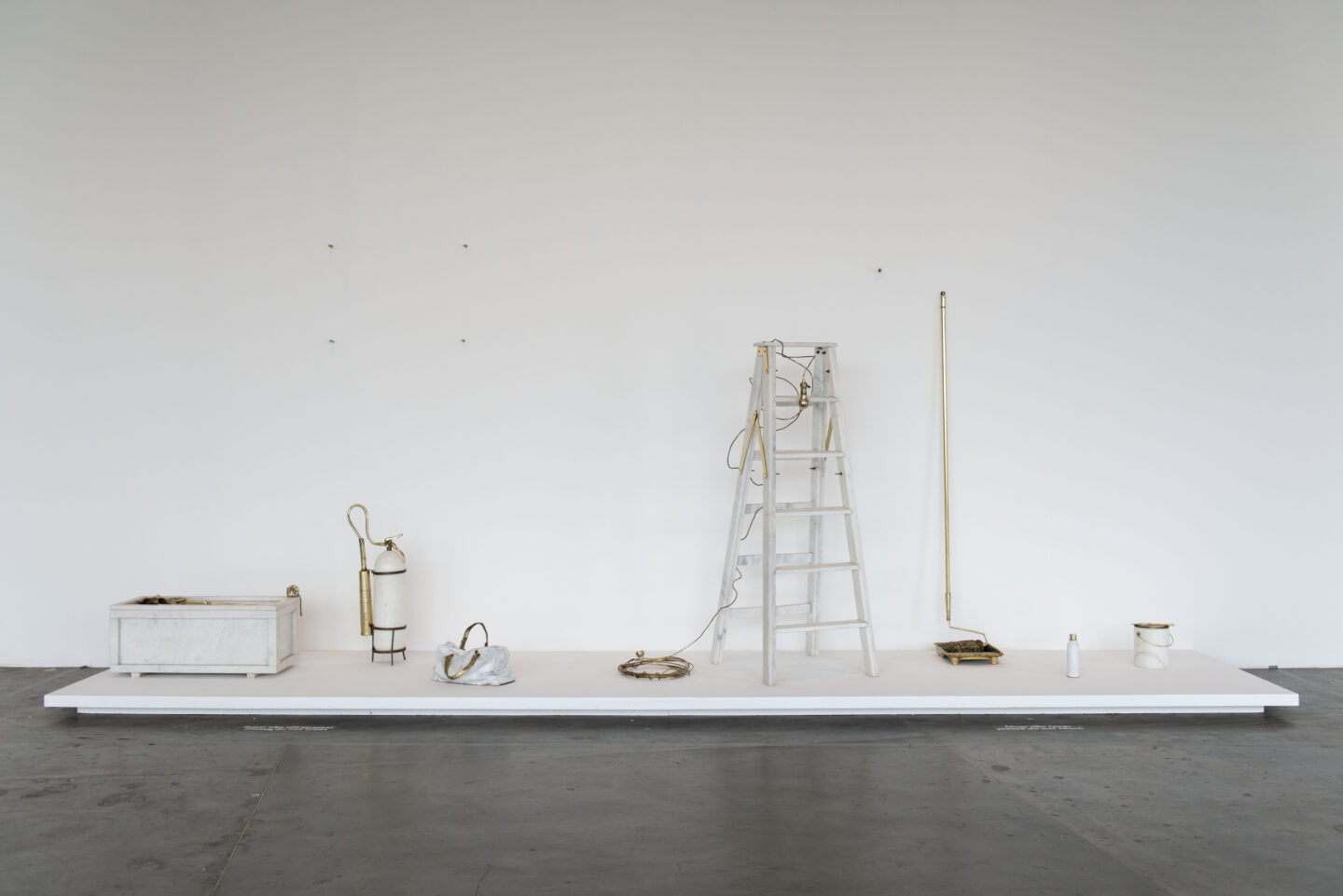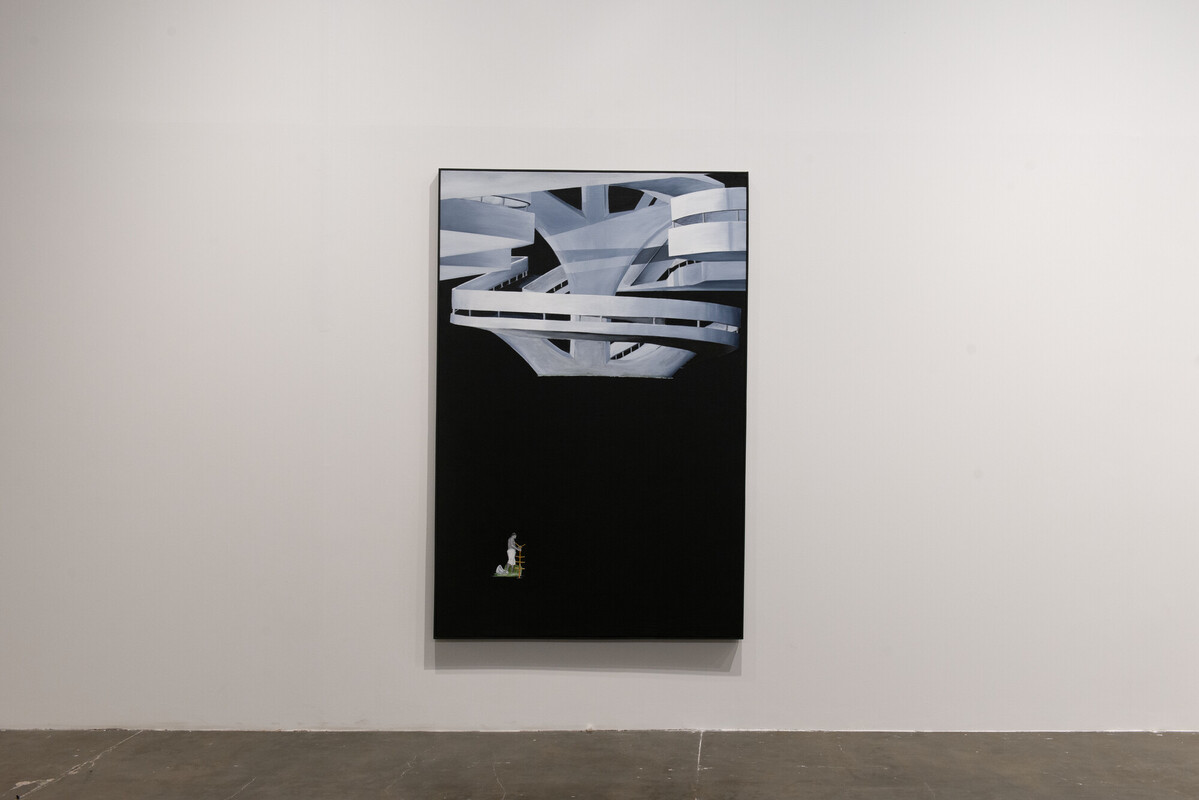
Sidney Amaral
During the later years of his life, Sidney Amaral (1973–-2017) kept his job as an art teacher in the public school system of the municipality of Mairiporã, in São Paulo. This experience, combined with his sensibility and his political-ideological project, ended up galvanizing work that highlighted a complexity that is often withheld from daily proletarian life. This is why elements of classical literature and art are sometimes reinterpreted in his plastic narratives and incorporated into them, which equally do not exclude psychological aspects and biographical data of the author that, however disturbing, are as such confronted by him.
The amalgam of artist, researcher, and teacher resulted in the realization of a constellation of poetic propositions, which speculated densely on the languages of drawing, painting, sculpture, engraving, and installation.
In O estrangeiro [The Foreigner] (2011), the artist uses acrylic paint to create another of his characteristic self-portraits. In fact, in a recurring manner, Sidney Amaral presents his own body as a territory conflicted by the most introverted, intimate, and private expressions, and also those of an extroverted and social character.
In the work in question, Amaral assumes the role of Charon, a ferryman who in Greek mythology transports souls from the realm of the living to that of the dead. This crossing was also that of the artist, who faced the obstacles of a much less favorable time than today regarding the circulation of Afrodiasporic symbolic production. A foreigner in both realms of life and death, the artist and his work are the elements that connect disparate spheres. This painful journey was, of course, not his alone, and the artist understood this. It is very significant that, in its 35th edition, the Bienal de São Paulo inverts this equation and the work of Amaral, who died prematurely, is now enshrined in the Olympus that he once portrayed as an obstacle.
claudinei roberto da silva
translated from Portuguese by philip somervell
- Vista da obra Acesso restrito, de Sidney Amaral durante a 35ª Bienal de São Paulo – coreografias do impossível © Levi Fanan / Fundação Bienal de São Paulo
- Detalhe da obra Acesso restrito, de Sidney Amaral durante a 35ª Bienal de São Paulo – coreografias do impossível © Levi Fanan / Fundação Bienal de São Paulo
- Detalhe da obra Acesso restrito, de Sidney Amaral durante a 35ª Bienal de São Paulo – coreografias do impossível © Levi Fanan / Fundação Bienal de São Paulo
- Detalhe da obra Acesso restrito, de Sidney Amaral durante a 35ª Bienal de São Paulo – coreografias do impossível © Levi Fanan / Fundação Bienal de São Paulo
- Detalhe da obra Acesso restrito, de Sidney Amaral durante a 35ª Bienal de São Paulo – coreografias do impossível © Levi Fanan / Fundação Bienal de São Paulo
- Detalhe da obra Acesso restrito, de Sidney Amaral durante a 35ª Bienal de São Paulo – coreografias do impossível © Levi Fanan / Fundação Bienal de São Paulo
- Vista da obra Acesso restrito, de Sidney Amaral durante a 35ª Bienal de São Paulo – coreografias do impossível © Levi Fanan / Fundação Bienal de São Paulo
Sidney Amaral (São Paulo, Brazil, 1973 – 2017) was a renowned visual artist and teacher from São Paulo, known for his vast artistic production that explored various languages and poetic discourses. Although he was intensely dedicated to three-dimensional sculpture in traditional materials, such as marble and bronze, he also created many two-dimensional works. In his paintings , he used watercolor, acrylic paint, and pencil, demonstrating artisanal drawing skills. Through his poetics, Amaral raised fundamental questions related to identity, broadening perspectives in discussions about the representation of black men in the Brazilian context.

 Português
Português